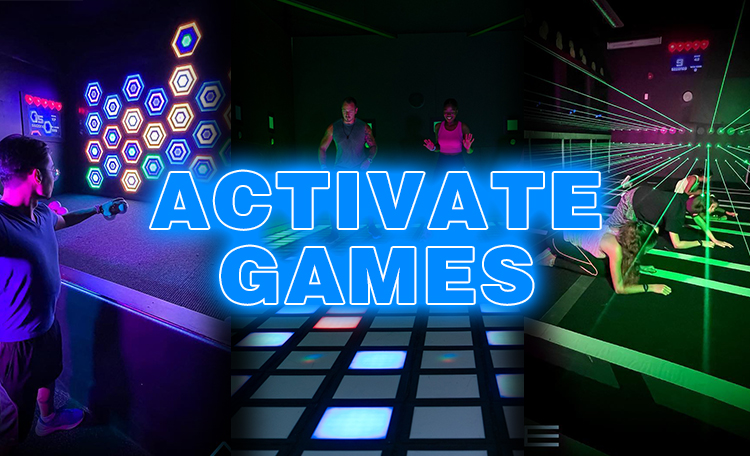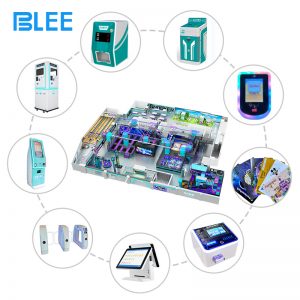Introduction
As Activate Game continues to dominate the interactive gaming market, understanding its global user base is critical for developers, venue operators, and advertisers. In 2024, the game’s blend of physical challenges and digital innovation has attracted a diverse audience. Leveraging data from Newzoo, Sensor Tower, and internal analytics, we break down the age demographics, geographic hotspots, and spending habits shaping Activate Game’s success.

1. Age Demographics: Who’s Playing Activate Game?
Activate Game’s appeal spans generations, but key age groups drive engagement:
Gen Z (13–24 years): 42% of Players
- Preferences: Competitive modes (e.g., Laser Dodge leaderboards), short-burst gameplay.
- Social Drivers: 68% play with friends in-person; 55% share gameplay on TikTok/Instagram.
Millennials (25–40 years): 35% of Players
- Preferences: Team-based challenges (e.g., Super Grid co-op), corporate event bookings.
- Spending Power: Highest in-app purchase rate (avg. $18/month).
Gen X & Boomers (41+ years): 23% of Players
- Preferences: Fitness-focused modes (e.g., Pipe Balls calorie-tracking), family-friendly activities.
- Trend: 200% YoY growth in users aged 50+ at entertainment centers.
Insight: Venues offering multi-generational packages (e.g., parent-child tournaments) see 30% higher retention.
2. Geographic Hotspots: Where is Activate Game Thriving?

Top 5 Regions by Revenue (2024)
- North America: 38% of global spending
- Key Markets: USA (75% of NA revenue), Canada.
- Trend: Corporate team-building bookings surged by 62% in Q1 2024.
- Asia-Pacific: 32% of global spending
- Leaders: Japan (arcade culture), South Korea (esports integration).
- Growth: India’s user base expanded by 140% after localized pricing.
- Europe: 22% of global spending
- Hotspots: UK, Germany, and France.
- Regulation Impact: GDPR-compliant data tracking boosted user trust.
- Latin America: 6%
- Rising Star: Brazil’s gaming cafes added Activate Game to 80% of locations.
- Middle East & Africa: 2%
- Opportunity: UAE’s luxury entertainment hubs drive premium pricing.
3. Spending Habits: How Players Open Their Wallets

In-Game Purchases (Digital)
- Top Items: Custom avatars (25% of sales), power-ups (20%), exclusive levels (18%).
- Paying Users: 22% of players spend monthly; Gen Z averages $12/month.
Physical Venue Revenue
- Hourly Play Rates: 15–15–30/hour, with VR modes priced 40% higher.
- Upsell Success: 45% of users buy food/drink packages when bundled with gameplay.
Hardware Sales
- Home Systems: Sales of Activate Game-compatible sensors grew by 90% (targeting millennials).
- Corporate Kits: Companies spend 2k–2k–10k on team-building setups.
4. What These Trends Mean for Stakeholders
For Developers
- Prioritize short-form competitive modes for Gen Z.
- Add fitness tracking to attract health-conscious users.
For Venue Operators
- Run region-specific events:
- NA: Friday night esports leagues.
- Japan: Themed Super Grid challenges with anime collaborations.
- Adopt dynamic pricing during peak hours.
For Advertisers
- Partner with fitness brands for in-game health stats (e.g., “Burn calories with Pipe Balls”).
- Use geo-targeted ads in high-growth regions like India and Brazil.
5. Future Predictions: 2025 and Beyond
- AI Personalization: Systems will tailor challenges to users’ skill levels in real-time.
- Emerging Markets: Nigeria and Indonesia poised for 300% growth with affordable mobile integrations.
- Sustainability Push: Venues using eco-friendly Activate Game hardware will gain PR traction.
Conclusion
Activate Game’s 2024 user base reflects a global, multi-generational phenomenon—one that blends gaming, fitness, and social interaction. By leveraging these insights, businesses can craft targeted strategies to engage players, boost revenue, and stay ahead in this dynamic market.


